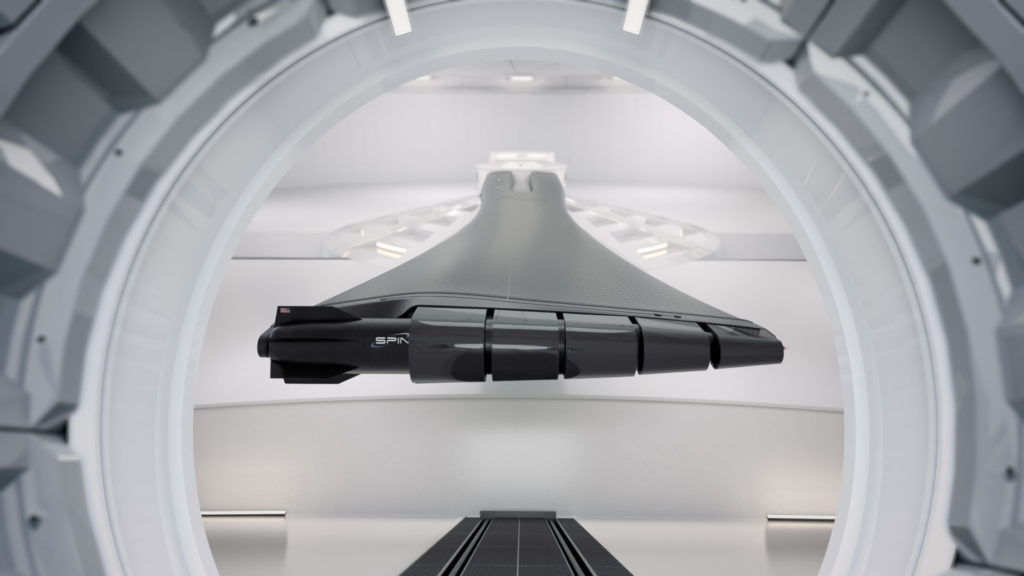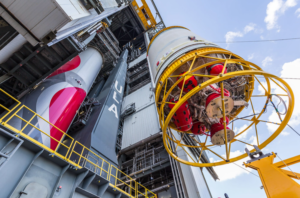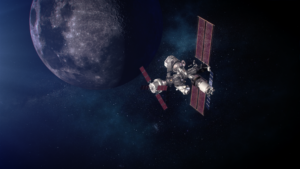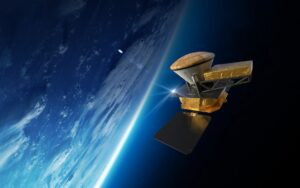
How Exactly Does SpinLaunch’s Orbital Accelerator Work?
SpinLaunch is a company trying to completely reinvent the process of accessing space. Over the past year, we have watched them continue to work on a suborbital accelerator with various tests. While exciting, this is quite different from an Orbital variant, one meant to send payloads into orbit with ease. All of which brings up the question of how exactly does SpinLaunch’s Orbital Accelerator work?
Thankfully, the company has provided some details on the future of this system and what to expect. Not to mention that not long from now SpinLaunch is expected to reveal the future location of its first orbital launch site. The combination of a vacuum chamber, hypersonic tether, exit tunnel, and a precision release is the backbone of SpinLaunch’s future.
While there are many skeptics of the company’s plan, SpinLaunch seems to be very confident and is still aiming for an operational system just a few years from now in 2025. Here I will go more in-depth into the design and plan for an orbital accelerator, some of the results from recent tests, what to expect in the future, and more.
Orbital Accelerator Overview

SpinLaunch describes the Orbital Accelerator as the world’s first kinetic space launch system. In this system, a few main components are intended to work perfectly together and produce a machine with very unique capabilities. It starts with the massive vacuum chamber. The vacuum chamber is a steel cylinder measuring around 300 feet in diameter. Within this low pressure environment, it allows the tether to spin at nearly 5,000 miles per hour with minimal aerodynamic heating and drag.
Next, you have the hypersonic tether in the very center. Made of high strength carbon fiber, the tether is spun up to launch speeds by a central electric drive. This electric drive consists of dual AC electric motors that feed to a hydrodynamic radial bearing assembly. The launch vehicle, which is intended to carry the payload through the atmosphere and into orbit, is attached to the very end of the tether.
After the payload has been spun up to immense speeds, it’s time to release it. However, as you can imagine, with a payload meant to spin around 5,000 miles per hour, this process has to be perfect. On the Orbital Accelerator, once launch speed is reached, an automatic sequence releases the launch vehicle through the exit tunnel with high precision.
This leads to the final main component of the system, the exit tunnel. In this case, ultra high speed airlock doors, that operate faster than the blink of an eye, prevent the vacuum chamber from re-pressurization after the launch vehicle is released. This process is intended to help SpinLaunch continue to launch very frequently with limited work in between. Ideally in the future, they can keep this chamber pressurized all day and launch every couple of hours. With the payload released, it shoots into the air at thousands of miles per hour. Not long after, its protective shell is separated and a small rocket ignites to put the payloads into orbit.
SpinLaunch describes this system as a fundamentally new way to reach space. The velocity boost provided by the accelerator’s electric drive results in a 4x reduction in the fuel required to reach orbit, a 10x reduction in cost, and the ability to launch multiple times per day. They point out that with industry plans to launch ten times the number of satellites over the next decade, it is more urgent than ever to develop environmentally sustainable space access technology. Because kinetically launched satellites exit the stratosphere without a rocket, SpinLaunch enables a future in which constellations of satellites and space payloads can be launched with zero emissions in the most critical layers of the atmosphere.
In a future where large numbers of people are traveling to space — structures, equipment, and supplies required to support in-space civilization must also be launched. For tens of thousands of people to someday work and live in space, millions of tons of infrastructure and supplies must be launched. SpinLaunch ensures that can be done with the least environmental impact possible. All of which highlight SpinLaunch’s current design and plan for the future of accessing space.
Surviving The Harsh Environment

Now that we know more about the Orbital Accelerator, we can take a closer look at some of the immense forces this system puts on the payload and how SpinLaunch is trying to withstand them. For one, during early feasibility analysis of SpinLaunch’s global architecture, one area of primary interest was g-hardening. As such, an in-depth evaluation into existing industry examples of high-g capable sensors and systems was undertaken. Early research identified promising examples of complex high-g systems in industry including artillery launched drones with deployable wings, propulsion, and optics. Following the completion of the 12 m prototype, a system capable of testing to over 20,000G’s, SpinLaunch’s engineering team began evaluating a variety of hardware packages at the 10,000G that components endure during the launch. Through this testing, they have been able to demonstrate the impressive ability of satellite systems to readily handle the centripetal environment.
The company also references the 1960s High Altitude Research Project, which demonstrated that large complex launch vehicles could traverse from vacuum to atmosphere at speeds of Mach 6. While the vehicle isn’t damaged by entering the atmosphere, SpinLaunch has designed it to survive the temporary high temperatures generated as it exits the atmosphere. The tip of the launch vehicle acts as a heat sink, absorbing any aerothermal loads experienced during flight. The heating load is less than that of other industry examples of high-speed flight.
In addition, they point out that modern carbon fiber and miniature electronics are the most relevant reasons why SpinLaunch has not been possible until recently. Carbon Fiber emerged as a high-strength composite in the early 1960s and only recently transitioned from limited aerospace applications to widespread industrial usage. Low-cost high strength to weight materials like modern carbon fiber are a critical part of what makes SpinLaunch possible while modern electronics, materials, and simulation tools allow for satellites to be adapted to the kinetic launch environment with relative ease.
Focusing on upcoming important events related to this system, earlier this year the company made a significant announcement in a quote saying, “The first Orbital Launch Site is in final selection in a soon-to-be-disclosed location in a coastal region of the United States. We are closely collaborating with the FAA and other governing agencies for launch site licensing.” Based on the timeline of this comment and what it says, this information will likely be released not long from now.
As for recent tests, SpinLaunch has been working very hard to try and learn everything surrounding the suborbital launch system. SpinLaunch started development in early 2015. Less than two years later, SpinLaunch surpassed the record for fastest rotational tip speeds and subsequently conducted hundreds of launches in its headquarters based laboratory. In October 2021, the first launch of the Suborbital System validated the technology and marked a key milestone. This year in 2022, the company has performed many different tests each helping them learn more.
The Suborbital Accelerator is designed to operate from 800 to 5,000 mph and acts primarily as a test-bed for the Orbital Launch System. SpinLaunch believes this system offers testing capabilities to customers and provides long term value as a satellite qualification facility. Focusing on the system’s most recent test reveals what exactly the company is working on. Just over a month ago in early October, SpinLaunch shared its results from its 10th test flight. The flight test, which occurred on September 27, 2022, demonstrated that SpinLaunch partners’ standard satellite components are inherently compatible with the company’s launch environment, and provided critical flight data, as all payloads were flown and recovered successfully. Flight Test 10, which had a similar flight trajectory as previous campaigns, was witnessed by more than 150 partners, government officials, and industry advocates. It was SpinLaunch’s tenth flight test in just under eleven months since the Suborbital Mass Accelerator came online in late 2021.
Four partner payloads, as well as two instrumentation payloads, were flown on the Suborbital Accelerator Flight Test Vehicle. For partners, the flight test provided critical data on the launch environment and payload integration process. As part of the pre-flight qualification process, SpinLaunch accelerated payloads up to 10,000G in SpinLaunch’s 12-meter Lab Accelerator at its Long Beach headquarters. Payloads were inspected post-spin and subsequently integrated into the Flight Test Vehicle in preparation for Flight Test 10. Earlier this year, SpinLaunch signed a Space Act Agreement with NASA to develop, integrate and fly a NASA payload, providing the agency with the information necessary to determine the potential of future commercial launch opportunities with SpinLaunch. This test gave the agency and SpinLaunch a lot of valuable information on the system and its future. Something we will need to keep an eye on as time goes on.
Conclusion
SpinLaunch is trying to reinvent how we access space. Its Orbital Accelerator consists of a massive vacuum chamber, hypersonic tether, exit tunnel, and a perfect release. All of which much work perfectly in order for this ambitious system to work. We will have to wait and see how it progresses and the impact it has on the space industry.



